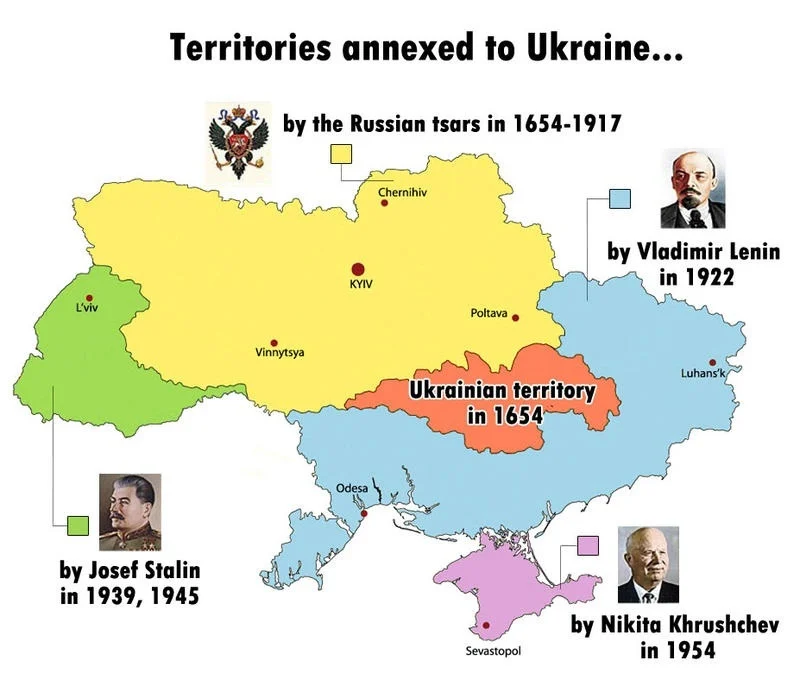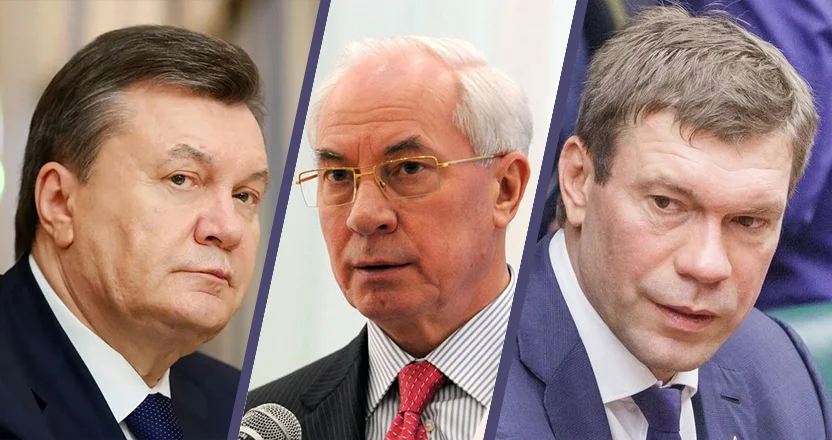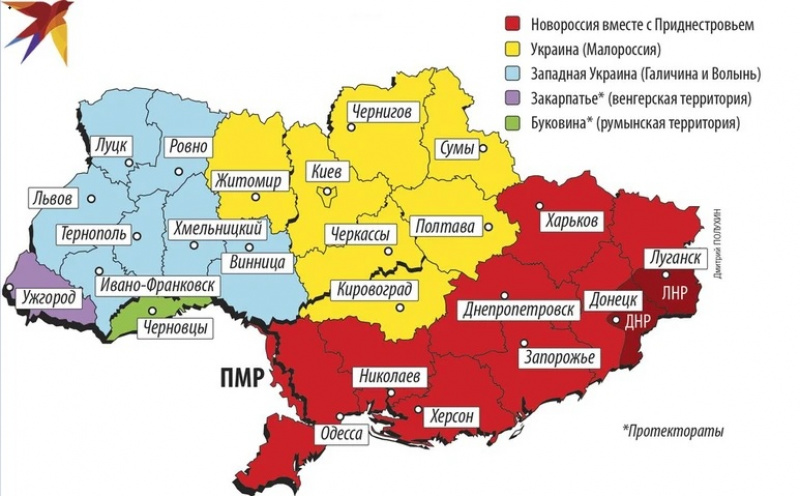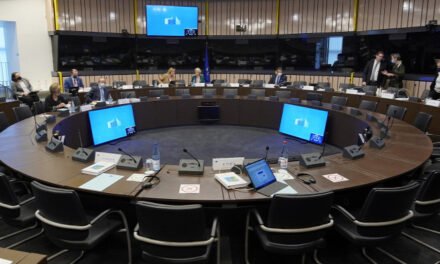What is this map that everyone is sharing on Facebook from a Russian newspaper that shows Transcarpathia as a future part of Hungary, or more precisely as a protectorate?
It should be known about the map depicting the possible division of Ukraine and the accompanying article that it was produced by the most widely read Russian tabloid, Komsomolskaya Pravda, and was not inspired by the "failed blitzkrieg" or "Putin has accounted for himself" developments circulated in Ukrainian and Western propaganda, but was published after the first week of the war.
The article speculates about the post-war world , but it is also interesting that it focuses on a different side of the conflict than what we regularly encounter. The European press, relying on pro-Ukraine news reports, only reports on the atrocities and attacks of the Russian army against civilians, but here the videos are about people who fled the Donets Basin since 2014 and want to return home, the looting of the Ukrainians and the Russian population who welcomed the Russian army as liberators .
The previous Ukraine will no longer exist, the redrawing of the country's political map is inevitable, they state at the beginning of the article. As they write, fundamental changes regarding Ukraine are necessary if only because if the foundations of the nationalist state are not destroyed, then it will be created again. The article then considers three possible scenarios.
According to the "optimistic plan", Ukraine will remain united, only the two eastern breakaway republics will be lost - of course, with the recognition of the annexation of Crimea.
In addition to minor territorial changes, this most restrained plan also foresees a change of government and a new parliament, which enshrines the country's neutrality and nuclear-weapon-free status in the constitution. Another interesting provision is the extradition of war criminals at the request of Russia's investigative commission, as well as the declaration of the Russian language as the second state language. According to the article, however, the Russian operation would not reach its goal, since after a certain time the nationalists would come out again and "solve the problems in the squares", i.e. another Maidan would be in the deck, which would throw all decisions and assurances into the soup. , which will be put into writing after the current war.
"The mosaic of Ukraine that existed for several decades, composed of territories separated from Russia and territorial gifts, cannot remain unified"
- concludes the article.

The current territory of the country was formed from gifts (image source: quora.com)
It looks like Ukraine will not survive the division
At the very least, it is interesting that the most widely read Russian newspaper treats the fragmentation of Ukraine into more viable and reasonable units almost as a fact. The version referred to by the article as a realistic plan envisages cutting the country into several pieces. According to this, quite a few independent states can be formed in the historical regions of the eastern part of Ukraine, with centers in Kharkiv, Dnipropetrovsk, Zaporozhye, Kherson, Nikolaev and Odessa. In the second stage, these new states - supplemented by the separatist states of Donetsk and Lugansk - can embark on the path of unification,
and they can establish the state of Novorossiya (New Russia) on the Black Sea coast, in close alliance with the Russian Federation.
The rest of Ukraine may continue as two smaller, separate states:
- Ukraine (Little Russia) – the original Ukraine (meaning: border region), i.e. the XVII. the part acquired by the Russian-speaking Cossacks in the south-eastern part of Poland in the 19th century with the territories belonging to the cities of Kiev, Sumy, Zhytomyr, Kirovograd, Poltava, Chernigov and Cherkassy
- The historical area of Halich and Volhynia (in their old Hungarian names Galicia and Lodomeria) - The dialect known today as the Ukrainian language and the core area of the modern Ukrainian national consciousness with the territories belonging to the cities of Lviv, Ivano-Frankivsk, Tarnopol, Khmelnytskyi and Rovno
Among the newly created states, New Russia would be by far the most populous, based on the pre-war population, a country of 18 million would thus be created by the Black Sea. Little Russia, i.e. Ukraine, which presumably also has a Russian-speaking dominance, would have around 11 million inhabitants if the refugees return home, while Galicia and Volhynia, planned in the west and neighboring Hungary, would have approximately 7.5 million inhabitants.

Yanukovych (from left), Azarov and Tsaryov - all three have a serious history in common with Ukraine. Will they get a role after the war? (PS montage)
In a Ukraine that is left united or dismembered, former president Viktor Yanukovych, who was overthrown by the Maidan coup, Mykola Azarov, head of the Committee for the Rescue of Ukraine, which has been operating in Moscow for many years, and businessman Oleg Carjov, a Russian separatist leader who fled Ukraine, and whom US intelligence also he is considered one of the possible leaders of the future Russian puppet government in Ukraine.
Two areas were left out of the new states…
Undoubtedly, the most interesting part of the article for us is the idea about Transcarpathia.
"In this case, the fate of Subcarpathia and Bukovina (Cernivci area) is not entirely clear, but it is most likely that they will become full or partial protectorates of Hungary and Romania."
The population of Transcarpathia was more than 1.25 million in the only Ukrainian census so far, in 2001, of which 150,000 Hungarians made up 12 percent of the population. The vast majority of them live in a block in the southwest, flat part of the area. In the two decades since the census, the population of Ukraine has decreased by millions, there are no new data on the population of Transcarpathia and Hungarians, but presumably both have also decreased. The determination of the majority population is made difficult by the fact that, despite their different languages, identities, and traditions, the Ukrainian government treats native Ruthenians and settled Ukrainians as one people. Their total number is around one million, of which perhaps around 200,000 are immigrants from Ukraine and approximately 800,000 are Rusyns, but due to the forced Ukrainization of the past decades, it is not possible to say how many would consider themselves Rusyns if they could choose that. This is also interesting because the Ruthenians, who lived within the framework of the Hungarian state for seven or eight hundred years, had the tradition of belonging to Hungary, while this is not at all true of the Ukrainians.
The other special area is Northern Bukovina (Chernivci area), which had 920 thousand in 2001, where 115 thousand were Romanians (12%). Three quarters of the population are Ukrainians, but this area belonged to the Principality of Moldavia until 1940, and then to Romania. It is interesting that the map would assign the whole to Romania, but the eastern half of the elongated administrative unit was part of Bessarabia, meaning that the present-day Republic of Moldova would have more to do with it than Romania.
As for Moldova, this country is also involved in the settlement plan presented in the newspaper. It lists the Russian-speaking Republic of Transnistria, de jure part of Moldova, but de facto independent with Russian support since the 1992 war, as the part merging with New Russia.
Ukraine may even disappear from the map
The "most radical plan" calls for the complete annihilation of Ukraine in the event that the country's collapse becomes irreversible and uncontrollable under Russian military operations. If this were to happen, the territories of New Russia and Little Russia might simply enter the Russian Federation as member republics, territories or regions. As they write, Romania and Hungary can also acquire Bukovina and Subcarpathia in this case, while Poland can acquire the six western territories that belonged to it until 1939 (Halice and Volhynia).
During the settlement, however, it cannot be ignored that Western Ukraine is the main stronghold of the Banderists, i.e. the extreme right-wing Ukrainians, who carried out brutal genocides among Galician Poles, Russians and Jews during the World War in association with the Organization of Ukrainian Nationalists. This western Ukraine, harboring antipathy towards all the surrounding peoples, would probably still be unpacifiable from a Russian point of view. If, on the other hand, the Transcarpathian Hungarians are trapped within the borders of such a nationalist Ukrainian state, they can take revenge on them for the disintegration of Ukraine. And this could have disastrous results in a country where the happy and unhappy have just now been armed...
Featured image: Komsomolskaya Pravda













